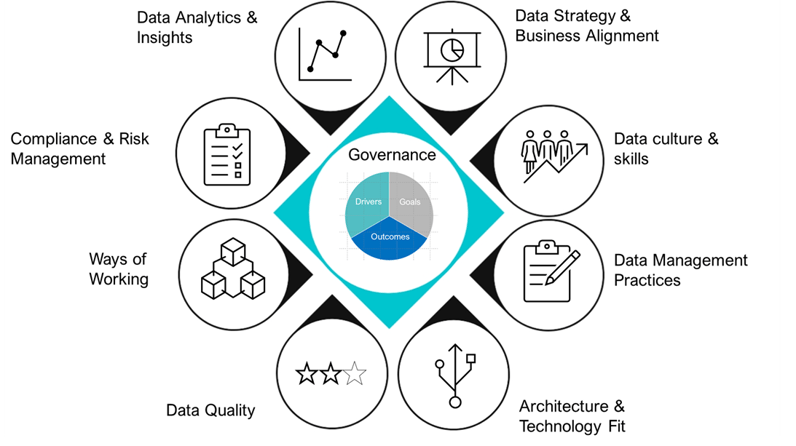“Data is an strategic asset”, “Use data to drive digital transformation”, “Become a data-driven business”. These are just some of the things we hear across many industries and sized organisations. I think we can all agree that data is important, the real question is:
- how do I realise some value from it?
- Will data really help shape my transformation?
- Does my organisation really see data as an asset and invest in its management?
- What does data driven even mean?
Fundamentally every organisation, whatever their size and data culture, needs to use its data efficiently and effectively. The amount of data collected by organisations grows larger by the day, where once a few hundred gigabytes spread across an organisation was regarded as exceptional, now collating terabytes to petabytes of data is regarded as normal. The ability to sift through large amounts of well organised, easily searchable data to generate timely, impactful business insights – from improving operational efficiency to gaining some form of competitive advantage – requires a solid data foundation.
What do we mean by a solid data foundation and how can you build one?
The elements of a data foundation
Here at Peru, we follow our own approach to data management developed utilising well known frameworks from EDM Council & DAMA as well as our own experience. We’ve found it the most practical way to help shape data programmes and take positive steps to increasingly likelihood of success for data initiatives.
The four main tenets of data foundations are:
Strategy Alignment & Data Culture: this involves the unique identification of “things” (products; customers; entities, transactions; etc.), assigning precise definitions of meaning to these things and the development of comprehensive inventories (where data resides) using data discovery techniques
Data Management Practices & Architecture: this covers identifying and developing essential skills and crucially securing executive support, ensuring that data governance is enforceable (authority), driving culture change which according to EDM needs to be “sanctioned by executive management, based on standards, harmonized across the lifecycle, governed by policy and monitored by audit”
Data Quality & Data Sharing/Ways of Working: this covers establishing a formal discipline of best practice for data quality, clearly assigning accountability for quality assurance by identifying ownership and stewardship and where possible using automation to minimize manual processes.
Analytics, Insights & Risk Management: this involves coordinating with business stakeholders as the business will be the ones to drive cultural change, finding relevant partners and suppliers to help get most from current and new technology investments (such as data catalog platforms) and championing cross organisational collaboration across business units.
This is all underpinned by assessing an organisations maturity against core aspects from business strategy alignment through to skills, culture and funding streams and execution components such as architecture, quality and governance. This enables organisations to understand what they have in place and where to improve and focus their resources for ultimate effect.




